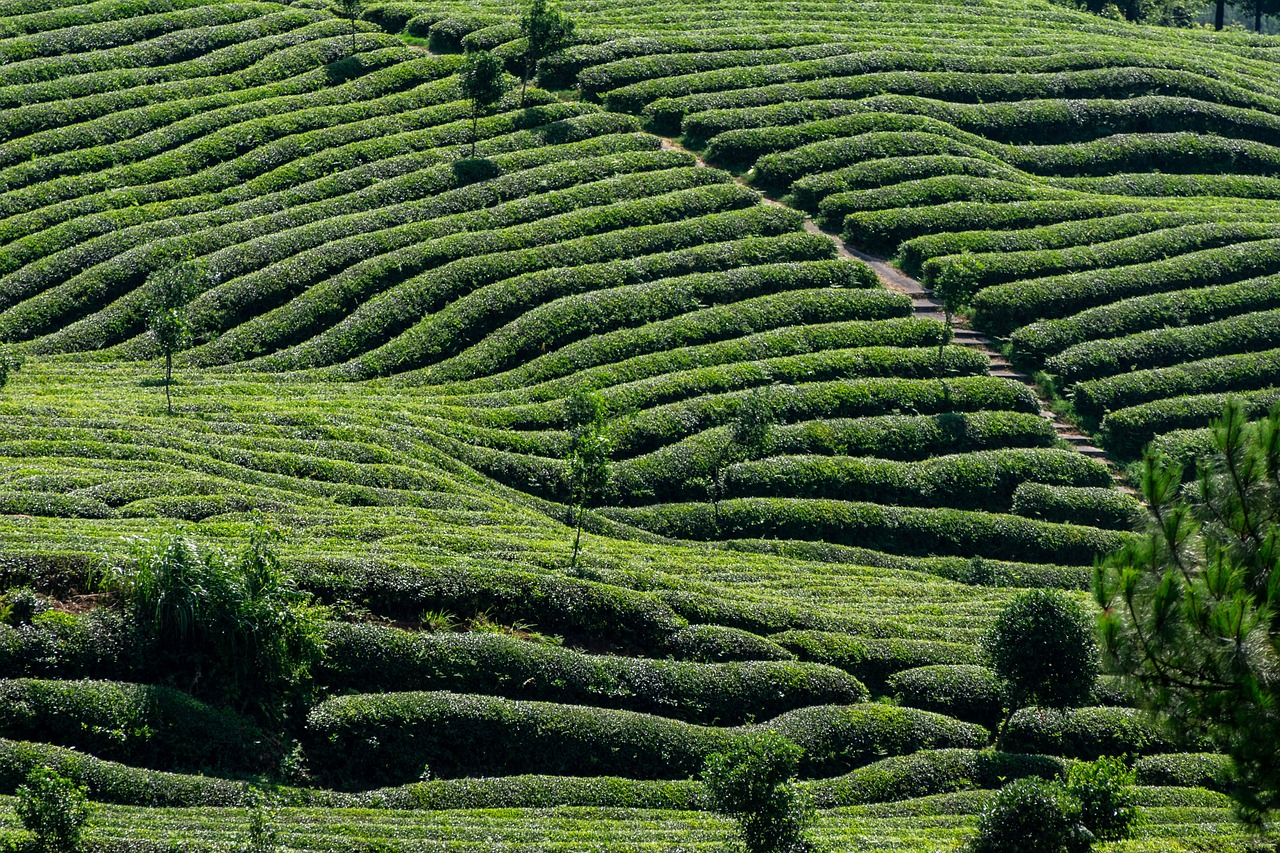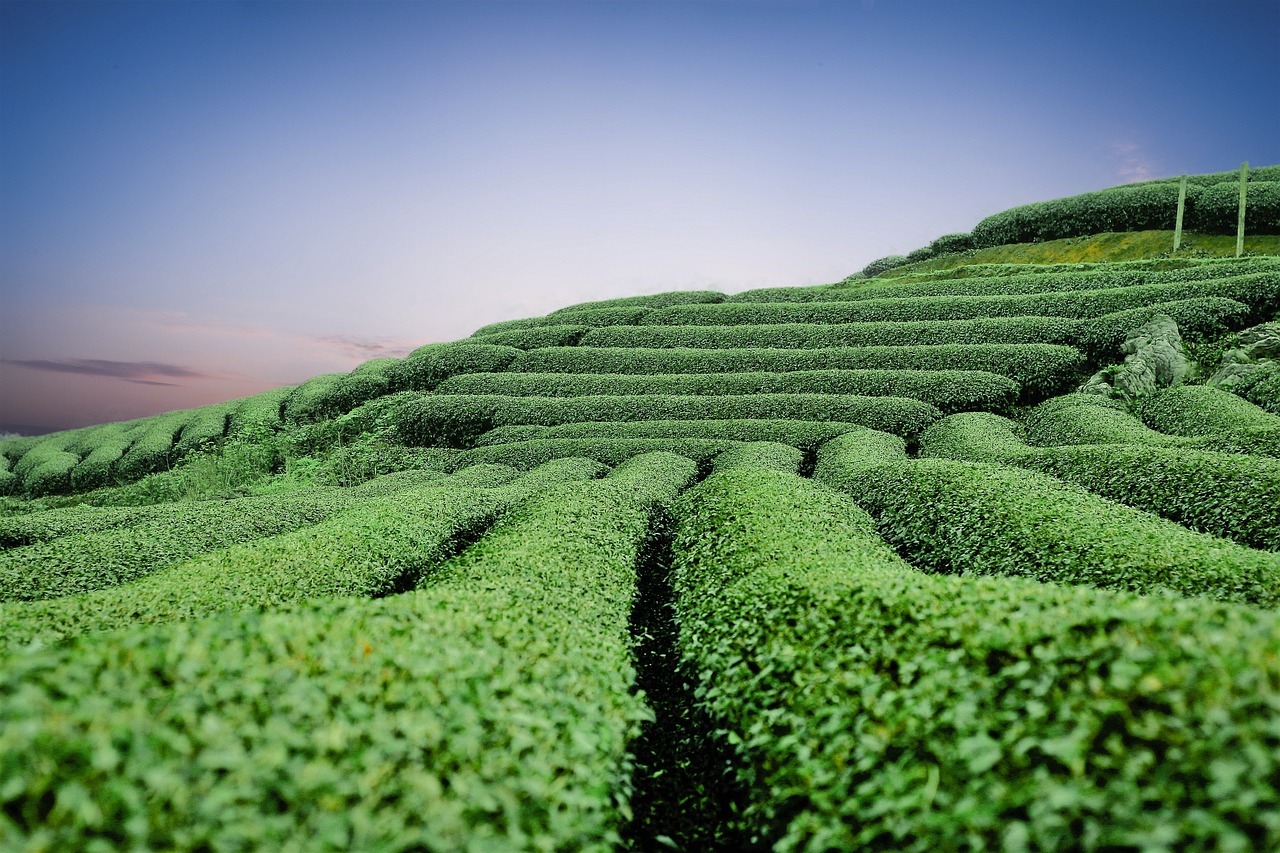Sencha Vs. Gyokuro: Comparing Two Popular Japanese Green Teas
If you’re a fan of Japanese green tea or simply curious about the different varieties, then this article is for you. Today, we’ll dive into the world of Sencha and Gyokuro, two immensely popular green teas from Japan. While both teas come from the same plant, Camellia sinensis, they have distinctive characteristics that set them apart. Get ready to embark on a journey where we explore the flavors, brewing methods, and unique qualities of Sencha and Gyokuro, and discover which one suits your taste buds the most. So grab a cup of your favorite tea and let’s get started!

Overview of Japanese Green Tea
Japanese green tea is a beloved beverage that has been a part of Japanese culture for centuries. It is known for its distinct taste, health benefits, and cultural significance. In this article, we will delve into the fascinating history of Japanese green tea, explore the different varieties available, and discuss the many health benefits that come with drinking this delightful beverage.
History of Japanese Green Tea
The history of Japanese green tea dates back to the 9th century when it was first brought over from China by Buddhist monks. Initially, it was consumed exclusively by the upper class and played a pivotal role in traditional Japanese tea ceremonies. However, over time, green tea became more accessible to the general population and quickly gained popularity throughout the country.
During the 12th century, a new type of tea known as Sencha emerged. Unlike the powdered matcha that was popular at the time, Sencha was made from loose tea leaves that were brewed in hot water. This brewing method allowed for a more nuanced and delicate flavor, which was highly appreciated by tea enthusiasts. Sencha soon became the most popular variety of green tea in Japan and remains a favorite to this day.

Different Varieties of Japanese Green Tea
There are several varieties of Japanese green tea, each with its own unique characteristics. Some of the most popular varieties include Sencha, Gyokuro, Matcha, and Hojicha.
Health Benefits of Japanese Green Tea
Aside from its delightful taste, Japanese green tea is also known for its numerous health benefits. It is rich in antioxidants, specifically catechins, which are known to have anti-inflammatory and anti-carcinogenic properties. Green tea has also been shown to boost metabolism, aid in weight loss, improve heart health, and even enhance brain function. Additionally, it contains theanine, an amino acid that promotes relaxation and reduces stress.

Understanding Sencha
Definition and Characteristics of Sencha
Sencha is the most widely consumed variety of Japanese green tea. It is made from high-quality, unshaded tea leaves that are harvested in the first or second flush. The leaves are steamed to prevent oxidation, rolled into thin needles, and dried. This gentle processing method helps preserve the vibrant green color and delicate flavor of Sencha.
Cultivation and Processing of Sencha
Sencha tea leaves are typically cultivated in full sunlight, which gives them a slightly astringent taste and a refreshing aroma. The leaves are carefully harvested by hand or machine and immediately steamed to halt the fermentation process. After steaming, the leaves are shaped and dried. This minimal processing method allows the natural flavors of the tea leaves to shine through.
Flavor Profile of Sencha
Sencha is known for its grassy, vegetal flavor with hints of sweetness and a slightly bitter aftertaste. The taste can vary depending on factors such as the location, climate, and processing techniques used. Generally, Sencha has a light, refreshing taste that is perfect for everyday consumption.
Popular Sencha Brands in Japan
Some of the most popular Sencha brands in Japan include Ippodo, Marukyu-Koyamaen, and Tsuen Tea. These brands are known for their dedication to quality and craftsmanship, ensuring that each cup of Sencha is a delightful experience.
Understanding Gyokuro
Definition and Characteristics of Gyokuro
Gyokuro is a premium variety of Japanese green tea that is highly prized for its unique flavor and luxurious experience. It is made from shade-grown tea leaves that are carefully cultivated in the weeks leading up to the harvest. The shading process restricts sunlight exposure, which causes the tea leaves to produce more chlorophyll and amino acids, resulting in a distinct flavor profile.
Cultivation and Processing of Gyokuro
The cultivation of Gyokuro is a time-consuming and delicate process. The tea plants are covered with shade cloths several weeks before the harvest to reduce sunlight exposure. This encourages the growth of tender leaves that have a rich, vibrant green color. After the harvest, the leaves are steamed, rolled, and dried using a similar process to Sencha. The result is a tea that is known for its umami flavor and smooth texture.
Flavor Profile of Gyokuro
Gyokuro is renowned for its complex flavor profile. It has a mild, sweet taste with a pleasant vegetal note and a hint of marine umami. The tea has a full-bodied and silky texture that is both refreshing and indulgent. Due to its unique cultivation and processing method, Gyokuro is often considered the pinnacle of Japanese green tea.
Popular Gyokuro Brands in Japan
Some of the most popular Gyokuro brands in Japan include Yamamotoyama, Yamamasa Koyamaen, and Tsuen Tea. These brands are committed to producing Gyokuro that embodies the highest standards of quality and craftsmanship.
Comparing Sencha and Gyokuro
Differences in Cultivation
While both Sencha and Gyokuro are made from the same tea plant, Camellia sinensis, they undergo different cultivation methods. Sencha is typically grown in full sunlight, whereas Gyokuro is cultivated under shade cloths for several weeks prior to harvest. This difference in cultivation results in variations in flavors and characteristics.
Differences in Processing
Both Sencha and Gyokuro are processed using a similar method of steaming, rolling, and drying. However, the processing time for Gyokuro is often longer than that of Sencha. Additionally, the shading process used for Gyokuro leads to the formation of unique flavors and compounds not typically found in Sencha.
Differences in Flavor
Sencha has a light, grassy flavor with a slightly bitter aftertaste, while Gyokuro offers a more complex taste that is rich in umami. The shade-grown leaves of Gyokuro produce a sweeter, more vegetal flavor profile compared to the slightly astringent taste of Sencha.
Differences in Aroma
Sencha is known for its fresh and grassy aroma, reminiscent of freshly cut grass or a spring garden. On the other hand, Gyokuro has a more intense and savory fragrance with notes of seaweed and greens.
Differences in Color
The color of the infused tea can also differ between Sencha and Gyokuro. Sencha typically brews into a vibrant, bright green liquor, while Gyokuro produces a deeper, jade-like green color. The visual appearance of the tea can contribute to the overall sensory experience.
Differences in Caffeine Content
Gyokuro is often considered to have a higher caffeine content compared to Sencha. This is because the shading process used in Gyokuro cultivation increases the levels of caffeine, theanine, and other beneficial compounds.
Differences in Price
Due to its more intricate cultivation and unique flavor profile, Gyokuro tends to be more expensive than Sencha. The time, effort, and expertise required to produce Gyokuro contribute to its higher price point.
Suitable Brewing Methods for Sencha
Sencha is best brewed using water that is about 70-80°C (158-176°F) and steeped for around 1-2 minutes. The exact brewing time and temperature may vary depending on personal preference and the specific Sencha variety.
Suitable Brewing Methods for Gyokuro
Gyokuro requires a more delicate brewing process to fully appreciate its unique flavors. It is traditionally brewed at a lower water temperature of around 50-60°C (122-140°F) and steeped for 2-3 minutes. This lower temperature brings out the umami flavors and prevents the tea from becoming bitter.
Finding the Right Tea for You
Ultimately, the choice between Sencha and Gyokuro comes down to personal preference. If you prefer a light and refreshing tea with a touch of bitterness, Sencha is the ideal choice. On the other hand, if you crave a more luxurious and complex tea experience with a deep umami flavor, Gyokuro is worth exploring.
Similarities Between Sencha and Gyokuro
Both Derived from Camellia Sinensis
Both Sencha and Gyokuro are made from the leaves of the Camellia sinensis plant, the same plant used to produce various types of tea worldwide. Their differences in flavor and characteristics come from variations in cultivation and processing methods.
Both Japanese Green Teas
Sencha and Gyokuro are both celebrated varieties of Japanese green tea, deeply ingrained in the country’s cultural heritage. They are enjoyed by tea enthusiasts both in Japan and around the world.
Both Rich in Antioxidants
Sencha and Gyokuro are packed with antioxidants, specifically catechins, which have been linked to various health benefits. Regular consumption of these teas may help boost the immune system, promote heart health, and provide anti-inflammatory effects.
Both Promote Good Health
Both Sencha and Gyokuro contribute to overall well-being due to their numerous health benefits. Their antioxidant properties, coupled with the calming effects of theanine found in green tea, make them a popular choice for those seeking a healthier lifestyle.
Choosing Between Sencha and Gyokuro
Personal Preference in Flavor
When it comes to deciding between Sencha and Gyokuro, it ultimately comes down to personal taste. Sencha offers a light and refreshing flavor, while Gyokuro presents a more complex and indulgent taste. Consider your preferences in flavors, as well as the overall tea experience you desire.
Brewing Preferences
Brewing preferences also play a role in choosing between Sencha and Gyokuro. If you prefer a tea that is easy to brew and can withstand higher water temperatures, Sencha may be the better choice. However, if you are willing to invest time and effort into a more meticulous brewing process, Gyokuro can provide a truly extraordinary tea experience.
Budget Considerations
It’s also important to consider your budget when choosing between Sencha and Gyokuro. As Gyokuro is considered a premium tea, it is generally more expensive than Sencha. If budget is a limiting factor, Sencha may be a more accessible option.
Health Benefits
Both Sencha and Gyokuro offer a myriad of health benefits, thanks to their rich antioxidant content and other beneficial compounds. Consider the specific health benefits you are seeking when making your decision. For example, if you are looking to boost metabolism or aid in weight loss, Sencha may be a more suitable choice.
Conclusion
Both Sencha and Gyokuro are exceptional varieties of Japanese green tea, each with its own distinctive flavors and characteristics. Whether you prefer the light and refreshing taste of Sencha or the luxurious and complex experience of Gyokuro, there is no wrong choice when it comes to enjoying Japanese green tea. Consider your personal preferences, brewing methods, budget, and health goals to find the perfect tea that suits your individual needs. Embrace the rich history and cultural significance of Japanese green tea as you embark on a delightful journey of flavors and well-being.
Comments are closed, but trackbacks and pingbacks are open.